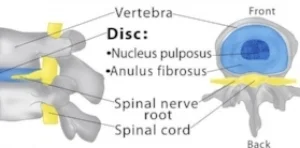Backbends, what a story! 1st episode: the anatomy
We discussed deeply the forward folds in a series of 3 articles before.
Now it's time to talk about backbends!
Backbends are a bit scary certainly because they don't seem to be good for our back. What a shame!
That is true that in our daily life we tend to naturally practice forward folds and twists...As a matter of fact even if I give it a thought I can't really see when we are using backbends the way we practice them in yoga (but if you have some examples, don't hesitate to write to me!).
As we usually stretch forwards or twist, our body is not really ready to bend backwards. As a result, when we start practicing backbends we have to be very careful and patient to let the body progressively develop the strength, the opening and the flexibility needed to proceed safely.
It is time to listen to your body and to not rush the process (do you remember Satya? This is the best moment to apply it!).
And remember! You don't estimate the effectiveness of a backbend according to its curve!
To begin with this new series of articles it is important to begin with the basics: the anatomy of the spine.
A bit of anatomy
The spine is divided into 4 sections and contains generally 33 vertebrae (some people have 32 some 34 vertebrae):
- cervical: 7 vertebrae that support the head. This part of the spine is very mobile
- thoracic: 12 vertebrae with a limited range of motion that hold the ribcage and protect the heart and the lungs
- lumbar: 5 vertebrae with a high range of mobility (but not as much as the cervical vertebrae). Their main function is to support the weight of the upper body
- pelvic: composed with the 5 bones of the sacrum that are fused together and the coccyx (4 vertebrae also fused together). This area that connects the spine to the pelvis has a low range of motion.
When you are an adult, the shape of the spine has 4 natural curves: the thoracic and pelvic areas are arching while the cervical and lumbar areas are hunching.
Spinal sections and curves
You also have a disc between every vertebra called the intervertebral disc, except between the first cervical vertebrae (the atlas and the axis) and in the coccyx. This disc is filled with a soft gel-like center (the nucleus pulposus): the main function of the intervertebral discs is to absorb all the shocks in order to protect the vertebrae, the brain and other structures such as the nerves. It also allows vertebral motion.
Vertebra and intervertebral disc
The spine is also made of ligaments that connect each vertebrae together. They include the anterior longitudinal ligament (in front of the spine) and the posterior longitudinal ligament (behind the spine but inside the spinal canal).
Ligaments of the spine
The anterior longitudinal ligament is a dense band of connective tissue. The posterior longitudinal ligament is also a band of connective tissue but it is narrower and weaker than the anterior longitudinal ligament.
The spinal ligaments limit the degree of movement of the spine to prevent you from going too far.
The anterior longitudinal ligament and the posterior longitudinal ligament prevent the nucleus of the intervertebral discs from splitting out and to cause hernia for example. Due to their respective function, the anterior longitudinal ligament limits the backbends (extension of the spine) while the posterior longitudinal ligament limits the forward folds (flexion of the spine).
The muscles of the back are also protecting the spine as they hold it upright and control movements.
Muscles of the spine
Finally and even more during backbends, the abdominal muscles have to be strong and engaged in order to protect the lumbar area.
Other muscles are used when backbending but you will discover it in our next article !




